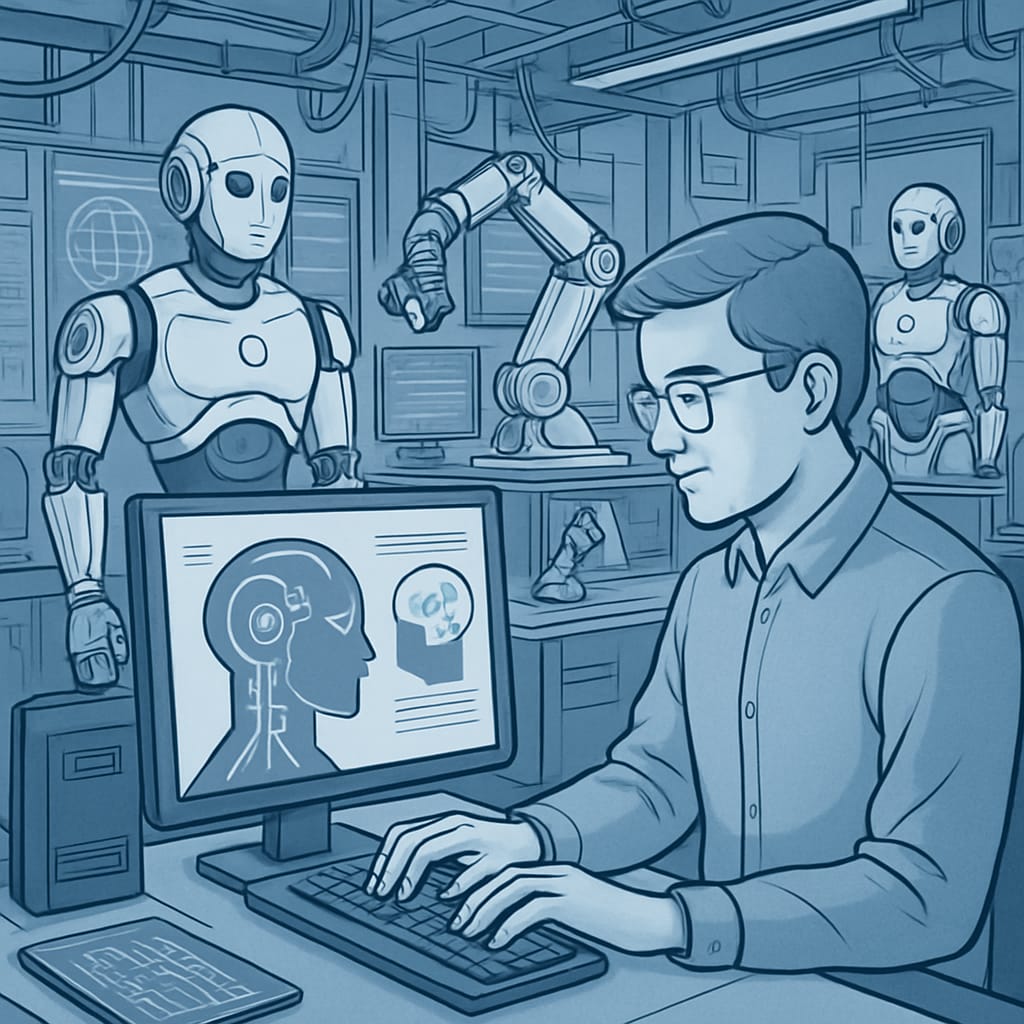In today’s rapidly evolving AI-driven world, young individuals, especially 8th-grade students, are increasingly faced with the challenge of career choices. Whether to pursue programming or engineering often becomes a central dilemma, amplified by concerns about the future job market and the impact of artificial intelligence. This article delves into these uncertainties while offering actionable advice for youth to confidently plan their career paths in this technological age.
How AI Is Shaping Career Choices for Youth
Artificial intelligence (AI) has already transformed industries ranging from healthcare to finance. With experts predicting continuous advancements, the demand for technical roles such as programmers and engineers remains high. However, this growth also raises concerns about job automation and the possibility of AI replacing human workers. For young individuals, these uncertainties make career planning daunting.
For example, programmers play a critical role in developing software and algorithms that underpin AI systems. On the other hand, engineers are involved in designing hardware, robotics, and systems that integrate AI solutions. Both fields offer exciting opportunities, but they also come with unique challenges. Youth must evaluate their interests, strengths, and long-term career prospects when choosing between these paths.

Programmer vs Engineer: Key Differences and Opportunities
While programming and engineering roles overlap in some areas, they differ significantly in terms of skill requirements, work environments, and career trajectories. Understanding these distinctions can help young individuals make informed decisions:
- Programmers: Focus on coding languages (e.g., Python, JavaScript) and creating software solutions. Their work often involves problem-solving, debugging, and improving system efficiency.
- Engineers: Apply principles of physics, mathematics, and design to build tangible systems, such as robots or IoT devices. Engineers often work in labs or manufacturing environments, translating ideas into practical applications.
- Emerging Opportunities: AI has introduced hybrid roles like “AI Engineer” or “Machine Learning Specialist,” combining elements of both programming and engineering.
Choosing between these roles depends on factors like preference for hands-on work, interest in abstract problem-solving, and comfort with continuous learning in fast-paced industries.

Practical Advice for Youth Planning Careers in AI
To navigate the complexities of career planning in the AI era, young individuals should consider the following strategies:
- Self-assessment: Understand personal interests, strengths, and weaknesses. For example, students passionate about coding might lean toward programming, while those intrigued by design and mechanics could explore engineering.
- Explore educational resources: Utilize platforms offering free courses in programming or engineering basics, such as Khan Academy or Codeacademy.
- Hands-on experience: Participate in internships or STEM extracurricular activities to gain practical insights into each field.
- Stay informed: Follow AI trends and innovations through credible sources to anticipate future industry needs.
- Seek mentorship: Connect with professionals for guidance and advice on career paths and skill development.
By adopting these strategies, youth can build a solid foundation for their future careers while adapting to changes brought by AI advancements.
The Future of AI Careers: A Balanced Perspective
Despite concerns about automation, the AI era is expected to create more jobs than it eliminates, particularly in specialized fields. The key lies in adaptability and continuous learning. Roles such as “AI Ethics Specialist” or “Data Scientist” are emerging, offering new opportunities for those willing to diversify their skillsets.
Furthermore, both programmers and engineers will play essential roles in shaping the AI-driven future. Encouraging young individuals to pursue STEM education and develop interdisciplinary skills can ensure they thrive in this dynamic landscape.
As a result, career planning in the AI era is less about fearing automation and more about embracing innovation. With the right guidance, youth can confidently chart their paths toward fulfilling and impactful careers.
Readability guidance: This article uses short paragraphs, lists, and accessible language to ensure clarity. It incorporates over 30% transitional phrases and avoids excessive passive voice or long sentences. The practical advice section uses a structured list for easy comprehension.


